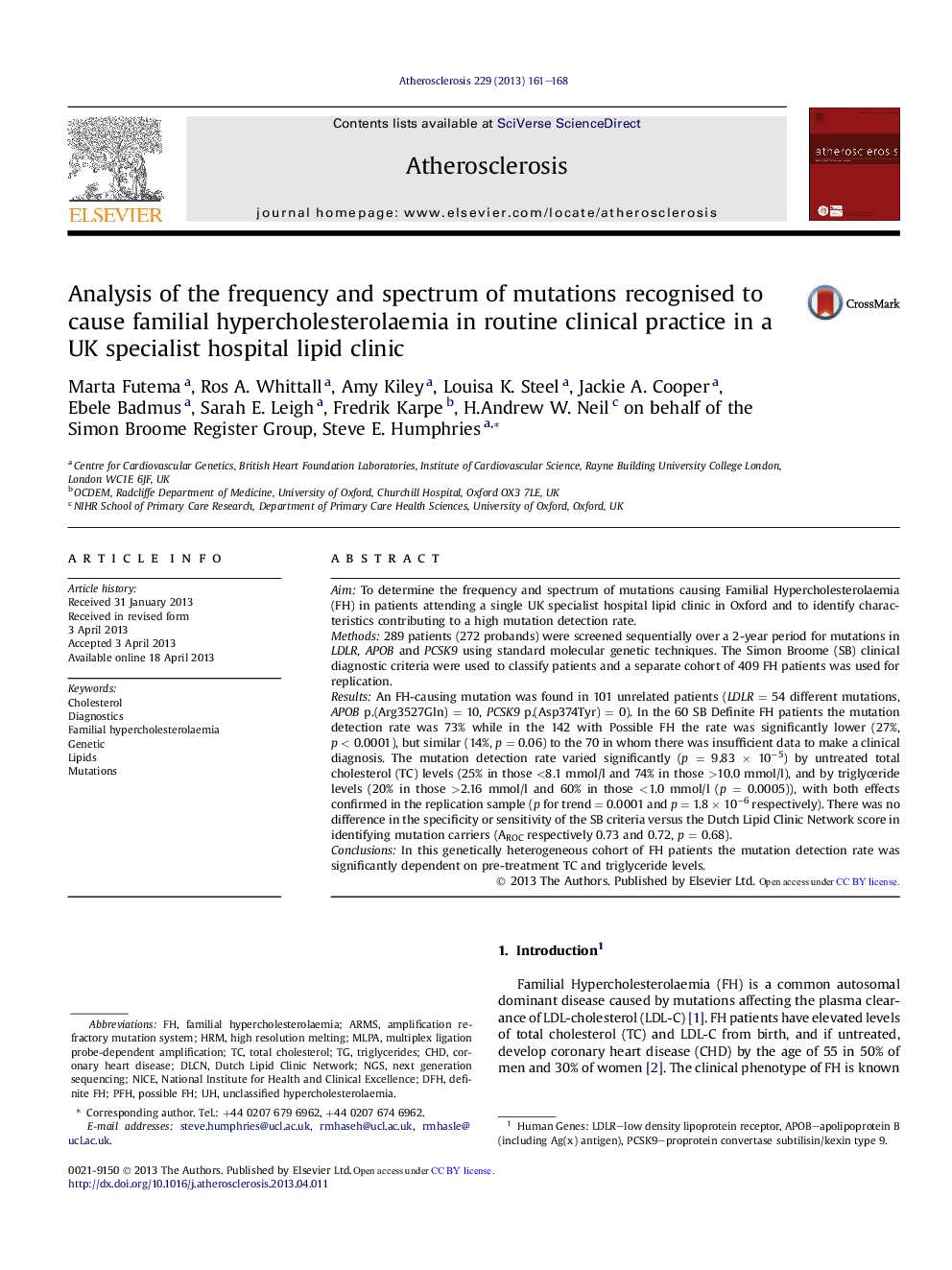| کد مقاله | کد نشریه | سال انتشار | مقاله انگلیسی | نسخه تمام متن |
|---|---|---|---|---|
| 5947859 | 1172374 | 2013 | 8 صفحه PDF | دانلود رایگان |
- 54 different LDLR mutations found in a cohort of 272 FH probands.
- The cohort was found to be genetically heterogeneous with no specific FH mutation.
- Mutation detection rate was highly dependent on pre-treatment TC and TG levels.
- No difference in specificity/sensitivity between 2 clinical FH diagnosis approaches.
- Inadequate LDL-C reduction marks the need for more effective lipid-lowering therapy.
AimTo determine the frequency and spectrum of mutations causing Familial Hypercholesterolaemia (FH) in patients attending a single UK specialist hospital lipid clinic in Oxford and to identify characteristics contributing to a high mutation detection rate.Methods289 patients (272 probands) were screened sequentially over a 2-year period for mutations in LDLR, APOB and PCSK9 using standard molecular genetic techniques. The Simon Broome (SB) clinical diagnostic criteria were used to classify patients and a separate cohort of 409 FH patients was used for replication.ResultsAn FH-causing mutation was found in 101 unrelated patients (LDLR = 54 different mutations, APOB p.(Arg3527Gln) = 10, PCSK9 p.(Asp374Tyr) = 0). In the 60 SB Definite FH patients the mutation detection rate was 73% while in the 142 with Possible FH the rate was significantly lower (27%, p < 0.0001), but similar (14%, p = 0.06) to the 70 in whom there was insufficient data to make a clinical diagnosis. The mutation detection rate varied significantly (p = 9.83 Ã 10â5) by untreated total cholesterol (TC) levels (25% in those <8.1 mmol/l and 74% in those >10.0 mmol/l), and by triglyceride levels (20% in those >2.16 mmol/l and 60% in those <1.0 mmol/l (p = 0.0005)), with both effects confirmed in the replication sample (p for trend = 0.0001 and p = 1.8 Ã 10â6 respectively). There was no difference in the specificity or sensitivity of the SB criteria versus the Dutch Lipid Clinic Network score in identifying mutation carriers (AROC respectively 0.73 and 0.72, p = 0.68).ConclusionsIn this genetically heterogeneous cohort of FH patients the mutation detection rate was significantly dependent on pre-treatment TC and triglyceride levels.
Journal: Atherosclerosis - Volume 229, Issue 1, July 2013, Pages 161-168
